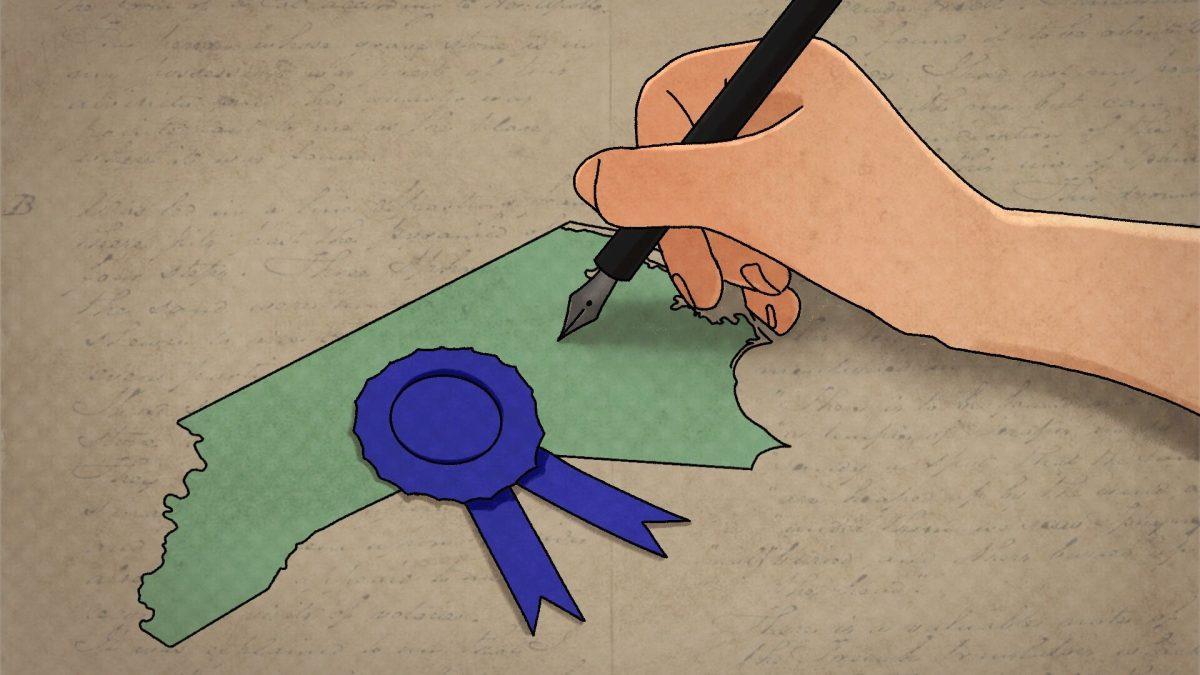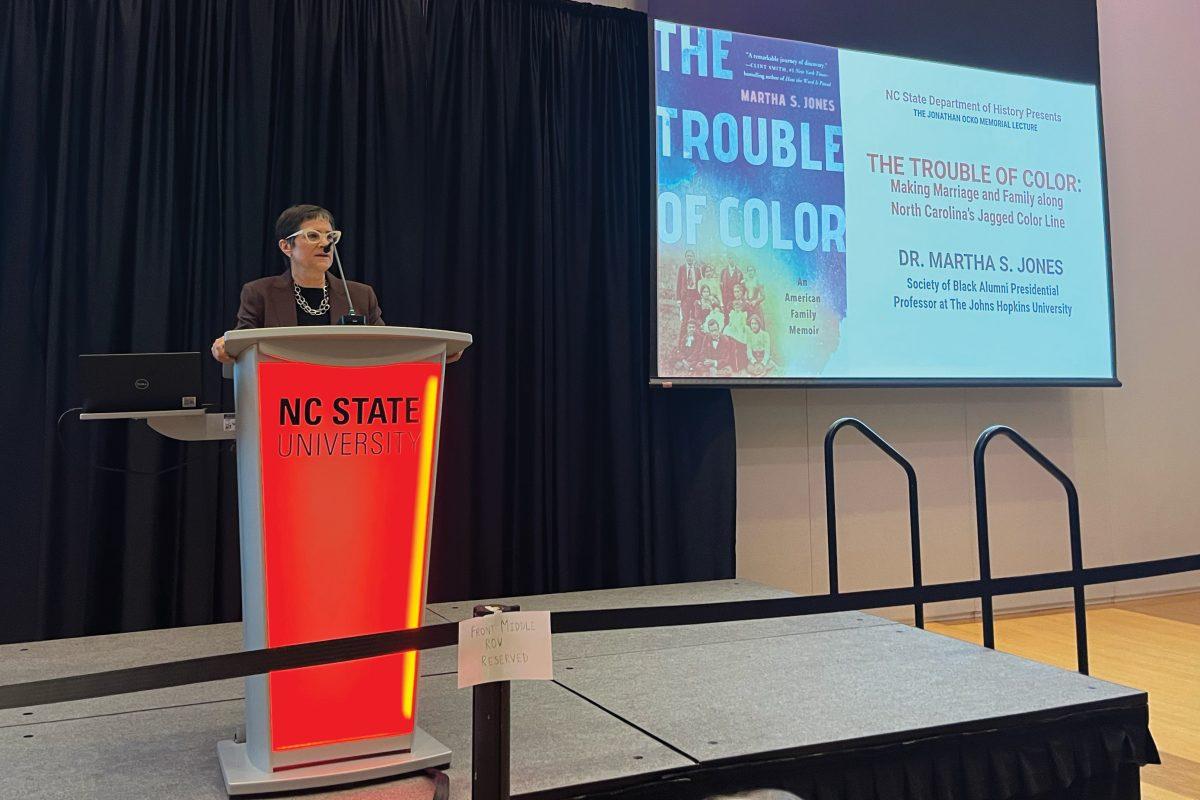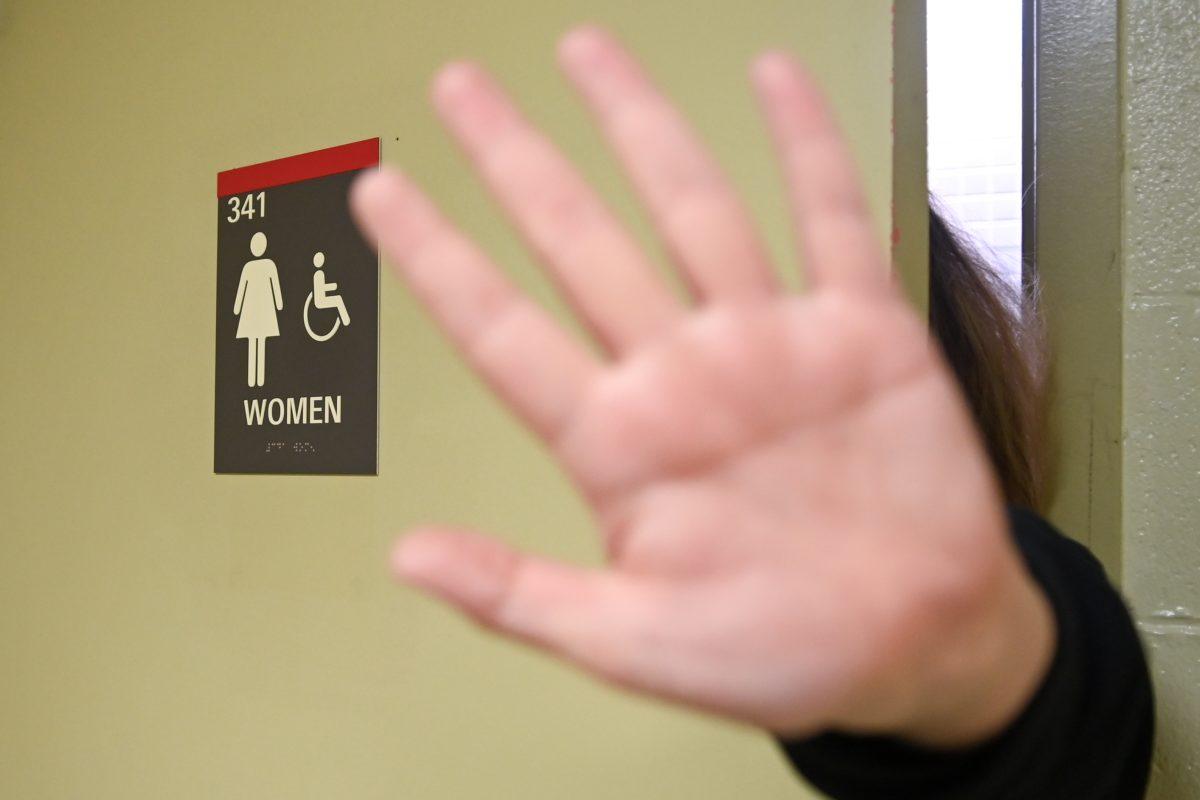NC State’s annual fiction contest is one of the largest free literary competitions in the South and is hosted by NC State’s Department of English, which had 17 students named as finalists this year.
Carter Sickels, an assistant professor of English and creative writing in the MFA program, led the undergraduate advanced fiction writing class and said the program is thriving.
“People are hungry,” Sickels said about his students. “Some of them are creative writing majors, but some of them have majors in the sciences or engineering, and they’re really hungry to express their creativity, to be encouraged to use their imagination to think with empathy and complexity.”
Sickels encouraged his students to submit entries to the NC State Fiction Contest in either category, short story or poetry. He said it’s beneficial for students to put their work out there.
“It can be empowering,” Sickels said. “Too often we think of writing as something we just do on our own, and then we put it away. This is a time to celebrate our students and share this fantastic work.”
Each year, NC State invites a guest judge to determine the winners and runner-up works from the pool of finalists. Annette Saunooke Clapsaddle, a North Carolinian author noted for being the first published author from the Eastern Band of Cherokee Indians with her book “Even As We Breathe,” was this year’s judge.
Clapsaddle said it was an honor to read the works of so many North Carolinian artists and that it’s extremely important creative acts are encouraged.
“All problem-solving stems from creative thinking,” Clapsaddle said. “Whatever kind of genre of artistry that we’re looking at, all of these inform every area of our lives in terms of problem-solving, creativity and communicating effectively.”
Not only is creative writing practical academically and professionally, but it also is useful for personal growth. Clapsaddle said using writing to understand oneself is inevitable and is unsurprising that most finalists used personal reflections.
Clapsaddle said an individualized spark is what makes a piece stand out in a competition.
“When you can tell there is not only knowledge of what’s going on or experience with what’s happening in those stories, but some sort of emotional, almost physical tie to the words,” Clapsaddle said, “I think that’s what makes a piece really rich.”
Mingduo Lui, a fourth-year studying creative writing and an international student, was a finalist in the short story category for the James Hurst Prize for Fiction. His piece, “Dumplings,” was about reconnecting with family through traditional Chinese cooking. He said his story was enhanced by his personal connection to it.
“I think it’s very handy when you’re writing about your own story because it’s something that you’ve been through,” Lui said. “I love everything to be authentic. Writing about my own experience, things happening around me, definitely guarantees the authenticity.”
Another finalist, Lydia Castillo, a fourth-year studying communication with a minor in creative writing, felt similarly about her own short story, “Sugar Cookies.” She said the themes of grief and acceptance were significant in her life, and the similarities didn’t stop there.
“The main character is half Hispanic, and I’m half Hispanic,” Castillo said. “Her physical traits are based on me, and I have siblings that I referenced, just combining their personalities.”
Tuesday Pil, a fourth-year studying English with a concentration in creative writing, said her work is also pulled from her own life and cultural heritage. Her piece“Demonyo,”meaning “demon” in Tagalog, is about a young girl going through all of the challenges of puberty and grief, while also slowly morphing into a monster, the Manananggal, from Filipino mythology.
Pil said her writing often feels too personal or weird for wider audiences, but the creative writing program has created an environment where she feels unjudged.
“All these students, a bunch of different students with different backgrounds, they write whatever they want,” Pil said. “When we give feedback to each other, it’s all very respectful, constructive and empathetic to what each person is trying to do.”
Pil said her experience has been untainted by the STEM orientation of NC State, and the tight-knit nature of the creative writing program is one of its strengths.
“Since [NC State] is not really known for liberal arts, there’s definitely a smaller cohort here,” Pil said. “I think that works out really well for me. You get to know your professors really well. And then the classes, of course, eventually have the same classmates, and it’s really fun.”
Kelly Farrell, a fourth-year studying English with a concentration in creative writing, agreed the structure of the program helps students grow and learn from each other.
“You just feel supported by your classmates because you can tell that they really enjoy your stories, and you feel support when they give you feedback on them,” she said.
Sickels said the diversity of the writers, the variance of their works and the small class sizes all contribute to a very rich environment for creativity. He said the things he reads from students are reflections of the world around them.
“It could be stories that are about queer and trans lives, BIPOC students, stories that center Black characters, women characters, what it’s like to grow poor, what it’s like to grow up as an immigrant,” Sickels said. “I think creative writing naturally encourages and can nourish diversity.”
Clapsaddle said the University hosting such a large creative writing contest is notable, with its usual association with engineering. She said that fact signifies the importance of the creative arts, and how diversifying skills and ways of thinking is how we progress.
“[The contest] is an acknowledgment that every skill set requires creativity and communication to have an impact on our world,” Clapsaddle said. “We can’t be in our own little boxes, doing the work without collaboration and without thinking in different ways. It’s extremely important that every part of our educational system is infused with opportunities for young people to pursue creative acts and be acknowledged for that.”












